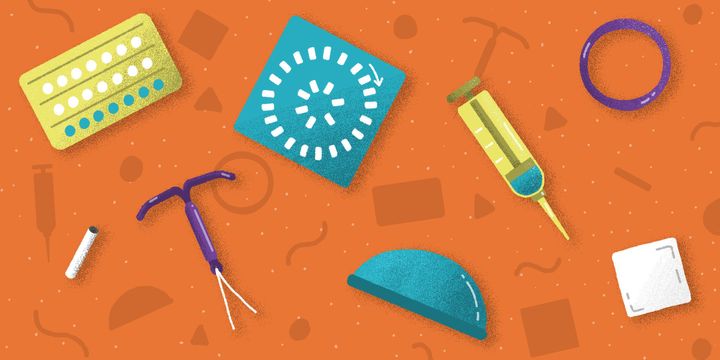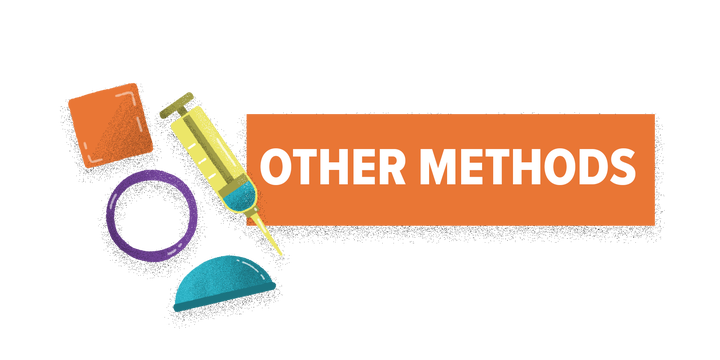
From the pill to the patch, the IUD to the implant, there are tons of different birth control options to choose from. And while that’s great, it also can be incredibly overwhelming. There are side effects, frequency of use, hormone amounts, your lifestyle and numerous other factors you need to consider.
Some have estrogen and progesterone, others no hormones at all, but all of them will carry a risk of side effects ― or, as Jennifer Villavicencio, a gynecologist at Michigan Medicine’s Department of Obstetrics and Gynecology, “intended effects” and “other effects.”
Some of these side effects might be positive changes, or one of the reasons you’re prescribed that type of BC in the first place.
“For instance, a pill that leads to a decrease in bleeding might be an intended effect of the birth control,” Villavicencio said.
However, it’s certainly wise to be mindful of what you’re experiencing when there’s the potential for a slew of effects as well. Villavicencio said choosing a birth control should be a “joint decision” between patient and doctor.
“When I start with someone, I do a lot of listening,” she said. “I want to hear their past experience with birth control, if they want to take something daily or ‘set and forget,’ how their monthly bleeding is, their medical history, as well as future family planning.”
Your doctor will also help you decide whether hormones are right for you, as well as what dose and what type of hormones you should take, as those factors impact your personal risk.
“You can treat some symptoms with hormones, like heavy bleeding or acne,” Villavicencio said. “The mechanism is also important. Taking the pill might increase your risk of blood clot or stroke if you have pre-existing health conditions, like high blood pressure, migraines with auras or a blood clot history. The risk also goes up with BMI, age and smoking status.”
And remember: Birth control is not one-size-fits-all, so your best friend may hate a method that you love. It generally takes some trial and error with the guidance of your doctor, according to Salena Zanotti, an OB/GYN at Cleveland Clinic.
“We ask women to stay with new methods for three months, so the body can adjust, if side effects are minimal, like a nuisance headache,” she explained.
Zanotti said side effects often clear up on their own in time, as long as they aren’t disturbing your quality of life. So talk to your doctor about how you’re tolerating your method of BC.
And if you’re lost on which method to choose, there’s hope for that too. Below is a mini guide to your options, in case you’re looking to swap or start something new:

Common names: Apri, Aranelle, Aviane, Lessina, Levlen, Levlite, Levora, Loestrin, Mircette, Natazia, Nordette, Ortho-Novum, Ortho Tri-Cyclen, Yasmin, Yaz
The Perks
The pill is a birth control mainstay. You can start and stop without visiting a doctor’s office, and it boasts a 91 percent efficacy when it comes to preventing pregnancy. The combination pill is the most popular method, which integrates estrogen and progesterone. This pill suppresses ovulation, thins out the lining of the uterus (making it harder for an egg to attach), and thickens cervical mucus, preventing the movement of sperm. Because it has estrogen and progesterone, it can regulate cycle-related symptoms like hormonal acne, cramps and heavy bleeding.
The Downsides
Some people are sensitive to estrogen and may experience side effects like nausea and breast tenderness, but Zanotti noted you can also try different pills with different doses of hormones, which may reduce the bothersome effects. The estrogen in the combo pill can also increase your risk of blood clot or stroke ― especially if you’re over 35, smoke, have a history of clotting, experience migraines with auras, have high blood pressure or elevated BMI ― so talk to your doctor about your risk of dangerous effects. Other common side effects include headaches and migraines, mood changes and changes in libido.

Common names: Camila, Errin, Heather, Jolivette, Nora-BE
The Perks
If you’re worried about estrogen, you can also opt for a simpler progestin-based “mini-pill,” as they’re frequently called. They are nearly as effective, and work by thickening the cervical mucus to trap sperm and thinning the lining of the uterus to prevent an egg from attaching. Progestin pills are great options for women who don’t want a long-acting BC method, as well as those who are breastfeeding or cannot tolerate estrogen. Progestin pills may also lighten and shorten your periods.
The Downsides
Progestin pills don’t treat issues like acne. You may also have slightly more breakthrough bleeding in the beginning, and you have to take the progestin pill every day at roughly the same time. “We suggest you set an alarm on your phone, because the pill must be taken within the same three-hour window every day to be most effective,” Villavicencio said. If your lifestyle doesn’t promote that level of consistency, it might not be a great option for you.

Common names: ParaGard, Mirena, Kyleena, Liletta, Skyla
The Perks
Intrauterine devices, or IUDs, are T-shaped and can be placed into your uterus by your gynecologist as a long-acting way to prevent pregnancy. The copper IUD can last up to 10 years, while hormonal options range from 3 to 6 years. They are becoming more and more popular as a “set and forget” form of birth control, says Villavicencio. The copper IUD repels sperm, keeping them away from eggs they might fertilize, whereas the hormonal IUD uses progestin, which is locally targeted in the uterus to thicken the cervical mucus and prevent ovulation.
The Downsides
Side effects for the progestin-based hormonal IUD are similar to that of the progestin-based pill, so you may experience irregular bleeding in the beginning as well as some issues with acne. With the copper version, you might have heavier bleeding, but Zanotti said most tolerate the slight increase without major issue.
IUDs take about five minutes to set in place, and even less time to remove. You might feel some cramping during the insertion, which can range from uncomfortable to painful (each woman’s experience is different). Villavicencio said it’s important to remember that you have to come back into the office to get the device taken out. If you’re thinking about a possible pregnancy soon, or you’re unsure if you might change your mind, you may want to use a form of birth control you can stop yourself.

Common names: Nexplanon, Implanon
The Perks
The implant is a thin rod, inserted just beneath the skin of your upper arm by your doctor after numbing the surrounding area with a local anesthetic. Similar to other methods of birth control, the implant prevents pregnancy using progestin to thicken cervical mucus and stop eggs from leaving the ovaries.
The implant is another form of long-acting contraception; Zanotti said she places implants in a lot of college students before they begin school, as they protect you from pregnancy for roughly three to four years. If you’re not looking to have children soon, it’s a great option.
The Downsides
Side effects for this method are similar to other forms of progestin-based birth control, as well, like irregular bleeding, headaches, nausea and breast tenderness.

There are still other forms of birth control out there you may want to discuss with your doctor, like the patch or the vaginal ring, with their own pros and cons attached. Depo-Provera, for instance, is a progestin-based shot you get from your doctor every three months to prevent pregnancy ― but there’s “slightly more risk of side effects,” like increased appetite and irregular bleeding, because there’s no way to stop them after you get the injection, Zanotti said.
To find the right form of contraception, keep in mind that it may take several tries using different methods to land on what works best for you. Talk to your doctor about what’s important to you when it comes to birth control, as well as any side effects you develop. If you’re looking for more information on different types of birth control before or between office visits, Villavicencio suggests Bedsider.org as an excellent resource for patients.
On top of birth control, don’t forget about preventing sexually transmitted infections ― which these methods of contraception do not do. To lower your risk of infections, use condoms for protection, always get tested with new partners and stay up-to-date on vaccinations (like those for HPV).
